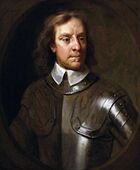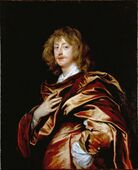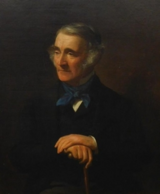List of political parties in Albeinland: Difference between revisions
mNo edit summary |
|||
| Line 60: | Line 60: | ||
| {{Composition bar|11|158|hex=#ffd700}}</center> | | {{Composition bar|11|158|hex=#ffd700}}</center> | ||
| {{Composition bar|7|79|hex=#ffd700}} | | {{Composition bar|7|79|hex=#ffd700}} | ||
| {{wp|Social liberalism}}, {{wp| | | {{wp|Social liberalism}}, {{wp|Europeanism|Lorecianism}}, {{wp|Keynesian economics|Keynesianism}} | ||
|- | |- | ||
| style="background-color:#6AB023" | | | style="background-color:#6AB023" | | ||
Revision as of 17:51, 26 February 2019
 |
|---|
| This article is part of a series on the politics and government of Albeinland |
|
|
This article lists the political parties and organizations in the Kingdom of Albeinland. Since the Lavender Revolution, Albeinland has became a constitutional monarchy, with political parties exerting a great influence in the parliamentary scenario.
Currently, the three largest parties in Albeinland are the centre-right Conservative Party, the centre-left Social Democratic Party and the centrist Liberal Party. Liberals are considered a major party, often rivaling with the conservatives or social democrats, despite losing much influence in the last five years.
History
After the Lavender Revolution in 1655, Albeinland ceases to be an absolute monarchy and becomes a parliamentary constitutional monarchy. According to the Basic Law - the national constitution of the country - the ruling monarch would be responsible for appointing 25 Lords Temporal in the House of Lords while the Church of Albeinland appoints 15 Lords Spiritual. The Lords Spiritual were only appointed to represent the church in the upper house and therefore it did not participated or voted in sessions that dealt with ordinary matters unless it affected the clergy in some way. The Lords Temporal, otherwise, were composed by nobles of diverse regions of Albeinland, and who could show their political positions. In the House of Commons, there was no appointment by the monarch but elections, with the bourgeoisie and knights being able to apply and elect MPs in a censitary suffrage system. The elections for Chancellor occurs when the two houses of parliament meet after the end of the her term of office, through indirect elections.
As the knights (from noble origin) and the bourgeoisie (from a more popular origin) shared the same house, the first ideological clashes took place, with members of both houses who had similar political positions joining together for their laws and acts be approved in the parliament. Due to this, the 8th Baron of Rolchester the Sir Lawrence Fairfax, in order to unite the conservative politicians against the liberals who were still divided, founded the Cavalier Party in 1668. The party advocated for a great centralization of the power to the king, representing and defending the nobility and clergy. A year later, in 1669, the then Chancellor Thomas Powell founded the Oxford Party to unite the liberals and moderates in the parliament against the Cavaliers. The Oxford Party was in favor of more autonomy for the parliament and less power for the crown, representing and defending the bourgeoisie and ordinary citizens of the realm. Despite being classified as liberal for the time, the Oxford Party was extremely conservative and also supported the monarchy.
Over the next few years, the two parties would try to win the national political hegemony. The Oxford Party immediately won the majority of the parliament and was consolidated as the only liberal party, having a majority in the House of Commons and the House of Lords for at leat fifteen years. At the same time, the Cavaliers consolidated themselves as the unique conservative opposition, being able to elect Fairfax and later the Viscount of Kingsley as Chancellors in 1684 and 1691, respectively. Throughout the 18th century, 11 Oxfords and 8 Cavaliers were elected to the office of Chancellor. At the end of the century, a third political force emerged in the House of Commons: the Petwrick Party, founded by Charles Russell which had a much more radical ideology. In 1789, the party won half of the seats in the House of Commons, which made it possible to elect Russell as Chancellor, ruling for 16 years. It was the only time that the Oxford Party and the Cavalier Party formed an opposition together.
With the beginning of Albeinland's industrialization in the early 19th century, the two major parties began to make deep reforms in their internal structure, reflecting the changing society at the time. In 1824, the Cavalier Frederick Pittsburgh was sworn in as the new Chancellor, belonging to the moderate wing of the party. During his tenure, several reforms were made to promote the country's industrialization. Due to this, Pittsburgh's reforms was heavily opposed within its own party by the rural noble wing that was against such reforms in Albeinland. After two general elections convened to end such opposition without success, Frederick took advantage of its popularity and extinguished the Cavalier Party and founded the Conservative Party in December 1829 under the justification of modernizing the political scene. In January 1830, the Oxford Party is also extinguished to give way to the Liberal Party, with the Petwricks being extinguished in 1834.
Throughout the 19th century, political hegemony was disputed by the conservatives and liberals, being interrupted rarely by a third minor leadership. In 1887, the liberal Chancellor Edmund Garland made drastic reforms in the Albish political system, with the introduction of universal male suffrage and direct elections for Chancellor in the same year. In 1899, the Socialist Workers' Union - a socialist party that has origins with the Petwrick Party - undergoes an extensive reform, becoming the Social Democratic Party. Due to this, the political landscape - which was divided between right-wing conservatives and right-wing liberals - now have a moderate centre-left third choice, quickly attracting urban workers and the middle class. In less than twenty years since its founding, the social democrats secured several seats in both houses and elected its first Chancellor in 1924.
The first half of the 20th century was marked by conservative and social democratic rivalry, with liberals, despite being a weakened force in parliament, managing to elect MPs and participated in various governments. During the second half of the 20th century, there was a further weakening of liberal and conservative leadership in Albeinland, with the social democrat Annelise Mayflower being the first and only woman elected to hold the office of Chancellor, ruling between 1952 and 1964, followed by other three social democratic governments until 1983. At that time, several other political parties are created.
The 1990s brought back the liberals to power until 2003, followed by conservatives who ruled between 2003 and 2011 and a social democrat rule between 2011 and 2018. With the 2018 general elections, Vincent Lloyd of the Conservative Party is elected as Chancellor, carrying out a government coalition along with the right-wing Albish Nationalist League.
Parties
Largest parties
| Party Name | Coalition | Party leader | Seats in the House of Commons | Seats in the House of Lords | Ideology | |
|---|---|---|---|---|---|---|
| Conservative Party | Vincent Lloyd | 72 / 158
|
39 / 79
|
Conservatism, Economic liberalism, Christian democracy | ||
| Social Democratic Party | Thomas Corbyn | 43 / 158
|
21 / 79
|
Social democracy, Democratic socialism, Welfare state | ||
| Liberal Party | Suzan Collins | 11 / 158
|
7 / 79
|
Social liberalism, Lorecianism, Keynesianism | ||
| Green Party | Amelie Harris | 8 / 158
|
1 / 79
|
Green politics, Democratic socialism, Social democracy | ||
| Federalist Union | Charles Wembley | 9 / 158
|
1 / 79
|
Federalism, Radical centrism, Social democracy | ||



